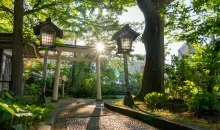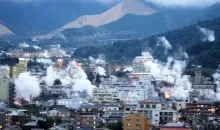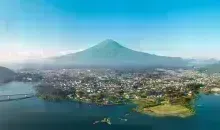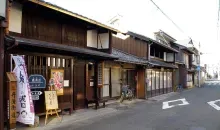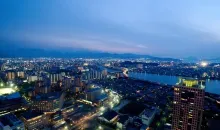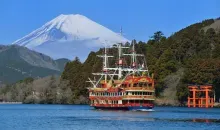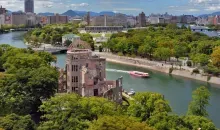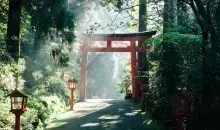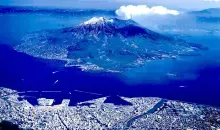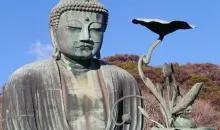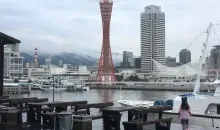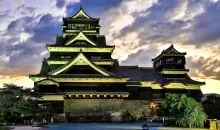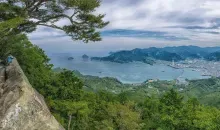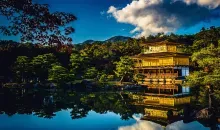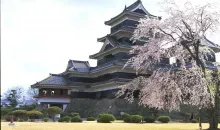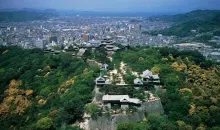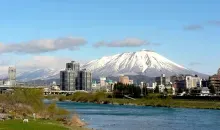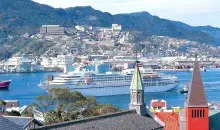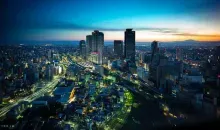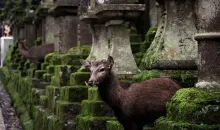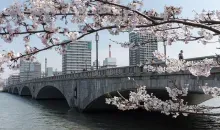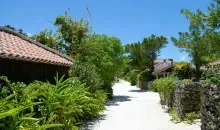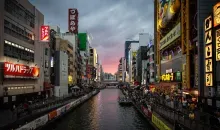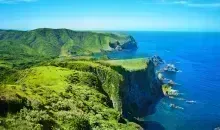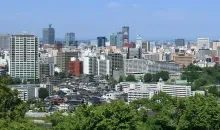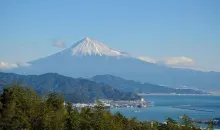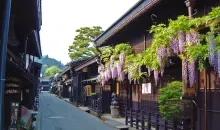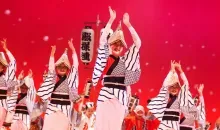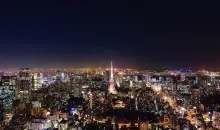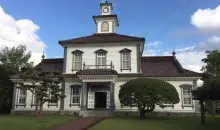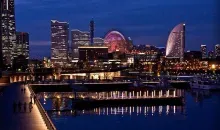Ise
- Pubblicato il : 28/08/2020
- Per : G.L/Ph.L
- Youtube
Alla scoperta della città più sacra del Giappone
Persa nel mezzo della prefettura di Mie, Ise irradia attraverso la sua aura misteriosa. Culla della dea del sole Amaterasu, questa piccola cittadina di campagna ospita Ise-Shingu, il santuario più sacro del Giappone. Edo, Ise è anche un'importante città culturale nel regione. Con la sua storia e la sua geografia, accoglie ogni anno migliaia di visitatori, desiderosi di svelare tutti i suoi misteri.
The birthplace of the goddess Amaterasu
Perhaps the most well-established attraction in Ise City is the famous Ise-Jingu Shrine. Arguably the most significant Shinto grand shrine in all of Japan, it was initially erected in honor of Amaterasu, the sun goddess attached to the imperial family, all the way back in the year 4 B.C.E. The religious complex consists of 125 smaller shrines and is said to be "the soul of Japan."
Go through the Uji Bridge to access the Naiku Shrine, the birthplace of the goddess Amaterasu. Ancient visitors believed its wooden construction would wash away their sins from those who pass through it.
The most prized shrine in the country, the Naiku is said to house the yatano kagami mirror, one of the three sacred relics of Japan, and was used to bring Amaterasu out of the cave in which she had been hiding following a violent argument with her brother Susanoo, the god of storms.
A un tiro di schioppo, non dimenticare che il Museo Sengukan sta spalancando le sue porte. Accessibile a tutti, custodisce in particolare i segreti di più di 1000 anni di manutenzione del sito !
Un centro culinario, le specialità gastronomiche di Ise
Ricca della sua spiritualità, Ise è ricca anche della sua gastronomia . Nel cuore della città, la tradizionale area di Ohrai-machi si estende per più di un chilometro. Case in legno e architettura di Edo (1603-1868), il quartiere delimitato dal fiume Isuzu offre una parentesi bucolica, un viaggio indietro nel tempo , al tempo in cui i pellegrini che venivano a Ise-jingu animavano i vicoli.
One of the other crown jewels for scenery in Ise, however, is Mount Asamagatake, elevated above the city and presenting an all-encompassing view of the region. The previously mentioned rich forests and glistening blue waters become one giant landscape from the mountain, which is a popular hiking destination. Historically, the ascent up the mountain was done by pilgrims prior to visiting Ise Jingu. The total journey up and down Mount Asamagatake takes around 4-5 hours.
A city built on artisanal craft
As a UNESCO-recognized city, the culture of traditional artisanal crafts is almost unparalleled in Ise. These crafts span from local specialties to world-recognized luxury items.
Ise City is a treasure trove for those looking for unique crafts utilizing traditional techniques, often made in small numbers and meticulously made by hand.
As previously mentioned, the rich woods of the area have provided Ise with quality lumber to be used for woodworking. A signature of the area is “Ise Shunkei,” the form of lacquerware that is created in the area. Traditionally made with local cypress wood (known as hinoki in Japanese), Ise Shunkei is notable for its rich color and high quality and is simultaneously intended to be used on an everyday basis. As the lacquerware is consistently used throughout the years, it develops a one-of-a-kind patina.
Another storied woodworking craft in Ise is that of Itto-obori sculpting. This is a form of sculpting that is chiseled by hand, derived from the city’s roots, and developed by shrine carpenters who would restore Ise Jingu once every 20 years throughout the centuries. Smaller crafts serve as great souvenirs for the goods, often used as home decor.
Likely the most internationally recognized craft to come out of Ise is that of pearls, as the farm cultivation of pearls originated here by Koichi Mikimoto at the end of the 19th century. Mikimoto is a name many may recognize, as it is the most reputable name in luxury pearl jewelry. The original island that the cultivation process was developed on stands as an attraction, complete with a dedicated museum. Pearls here were initially gathered by the aforementioned ama divers, whose work set the foundation for Mikimoto’s farming process. Fashion and jewelry enthusiasts ought to visit the island and commemorate the genesis of one of the most recognized names in the industry and see the continued art of pearl cultivation in action.
The culinary specialties of Ise
Al suo interno, la via dello shoppingOkage-Yokocho permette di scoprire le specialità locali . Udon, manzo Matsusaka, o abalone pescato dall'ama della cittadina vicina, gli innumerevoli ristoranti della zona cucinano da secoli ottime ricette .
Soprattutto per quanto riguarda il tè e il wagashi , poiché Ise è il terzo produttore di tè del Paese . Da lì è nato anche l' kafuku , un mochi ripieno di pasta di fagioli rossi inventato in una delle sale da tè della città nel XVIII secolo.
Oltre ai suoi ristoranti, caffè e bancarelle, Okage-Yokocho ha molti negozi di souvenir . Miele fatto in casa, ceramiche e portafortuna, la strada mette sotto i riflettori l'artigianato di Ise!
Specialmente ogni primo del mese durante Tsuitachi Mairi , il primo pellegrinaggio mensile, quando i negozi aprono molto presto per offrire cose nuove ai coraggiosi che vengono a Oharai-machi dopo il loro ritorno da Ise-jingu.
Additionally, Ise is the third-largest tea producer in the country, where tea and wagashi are favorite snacks. Akafuku, a mochi stuffed with red bean paste, was invented in one of the city's tea houses in the 18th century.
In addition to its restaurants, cafes, and stalls, Okage-Yokocho has many souvenir shops. Homemade honey, pottery, and lucky charms highlight the craftsmanship of Ise!
During the first of the month, Tsuitachi Mairi (the first monthly pilgrimage), stores open very early to offer new things to the brave who come to Oharai-machi after their return from Ise-jingu.
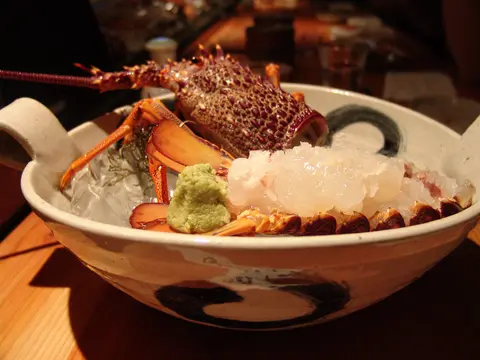
Ise-ebi
takaokun on Flickr, CC BY 2.0
I migliori posti dove mangiare a Ise
AkafukuHonten : specialista di Akafuku
Indirizzo : 26 Ujinakanokiri-cho, Ise-shi, Mie-ken
Orario : dalle 5:00 alle 17:00
Ebiya : in abalone da diverse generazioni
Indirizzo : 13 Ujiimazaike-cho, Ise-shi, Mie-ken
Orario : dalle 9:00 alle 17:00
OiseyaHonpo : famoso per il manzo Matsusaka
Indirizzo : 94-7 Ujinakanokiri-cho, Ise-shi, Mie-ken
Orario : dalle 10.00 alle 17.00 (attenzione, gli orari cambiano regolarmente)
Iseman Naiku Mae Japanese Sake Factory : l'unica distilleria di Ise, puoi trovare amazake, yuzu sake e sakè di prugne.
Indirizzo : Okage Yokocho, 77-2 Ujinakanokiri-cho, Ise-shi, Mie-ken
Orario: dalle 9:30 alle 17:30 (gli orari possono variare regolarmente)

Une des rues du quartier d'Okage Yokocho
Wikipedia
Futami Onsen: Relaxation amongst natural beauty
Futami Onsen is a premier destination in Ise, home to some of the most amazing scenery in all of Japan, centered around warm and relaxing onsen hot springs with luxurious accommodations.
The most famous landmark at Futami is Meoto Iwa, or “the wedded rocks.” The two holy stones are connected by a rope structure known as a shimenawa. The two rocks represent the connection between two of Shinto’s most significant deities: Izanami and Izanagi, the mother and father of Japan within the Shinto mythos. On clear mornings, the sun can be seen rising between the two rocks, encompassing much of the most emblematic features of the Japanese archipelago into one scene. The beaches in the area are also lauded, making them popular with both those who wish to take the time to relax and those who wish to indulge in nature.
Futami Onsen is one of the most significant locations regarding Japan’s traditional spirituality and history, and being able to witness such while indulging in top-tier comfort and accommodation makes it one of the most eclectic destinations in all of Japan.
Penisola di Shima, luoghi da visitare vicino a Ise
Oltre a questi siti imperdibili, passeremo un po' più di tempo intorno a Ise per goderci il Parco nazionale della penisola di Shima , in particolare la baia di Futami , dove veniamo a vedere le famose rocce sposate di Meoto Iwa.
AuNord (Toba), è una celebrità completamente diversa da Amaterasu che attira le folle: Mikimoto, fondatore della cultura delle perle giapponese. Perché le acque locali ospitano da tempo le ostriche perlate, un tempo pescate con lo snorkeling dagli artigiani subacquei ama . Ora si immergono solo per turisti, ma un museo (Mikimoto Pearl Island) rende omaggio alle loro tradizioni, e soprattutto al metodo che ha permesso a Mikimoto Kokichi di fare della cultura delle perle un'industria fiorente.
Il sud della penisola è più tranquillo, ma meno servito. Più fotogenico anche, perché le coste frastagliate offrono un superbo panorama delle 60 isole di Ago Bay e dei pescherecci di perle, mentre Goza è un piccolo porto di pescatori a due passi da un'ampia spiaggia di sabbia bianca e fine (Goza-shirahama).
Interessato da Ise
Scopri altre città da esplorare








